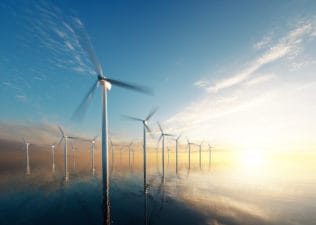To err is human. But lacking confidence over whether you made the right decision can create anxiety and insecurity. Fortunately, I am 100% positive about Enbridge (TSX:ENB) and will buy the stock anytime without second guessing. The company’s dividend growth rate has slowed to around 3% since the pandemic, against the 28-year average of 10%. But slower dividend growth doesn’t mean the company is losing its charm.
A stock to buy without second guessing
Enbridge achieved the status of dividend aristocrat for its 69-year history of paying regular dividends and growing them for the last 28 years. It reported windfall gains in 2022 due to the global energy crisis. Its distributable cash flow (DCF) surged 9.3% to $5.42 per share as oil prices peaked during the supply chain disruption from the Russia-Ukraine war.
Despite record gains, Enbridge increased its dividend per share by 3.2% to an estimated $3.55 in 2023. The company’s dividend policy is to pay out 60–70% of its previous year’s DCF to shareholders. Going by its policy, the pipeline major and natural gas utility distributed 65% of its 2022 DCF. Had it distributed 70% DCF, the dividend per share would have increased to 10.3% to $3.79.
Enbridge’s 60–70% payout ratio is part of its low-risk business model that helps the company maintain its dividends and even grow them amid macroeconomic uncertainty. Let’s see how.
Enbridge’s low-risk business model
The financial market is volatile and sensitive to macro events like inflation and interest rates. Higher interest rates have increased debt servicing costs, and inflation has increased the operating expense of several companies. As a pipeline operator, Enbridge is also a capital-intensive company and has significant debt on its balance sheet. It funds projects through equity and debt, and once operational, the project pays for itself.
The DCF is the cash flow left after setting aside money for capital spending. About 30–40% of the DCF (not paid to shareholders) is used for organic growth, mergers and acquisitions (M&A), debt repayment, and share buybacks.
While growth and M&A can help Enbridge increase revenue, share buybacks can reduce share count, enabling it to maintain the dividend per share. The company maintains a debt-to-EBITDA ratio in the 4.5x to 5.0x range, with the 2022 ratio at 4.7x. It means Enbridge’s debt is 4.7 times its annual operating profit. These ranges prevent Enbridge from acting aggressively in a bull market while making hay for the bear market.
Behind Enbridge stock’s 3% dividend growth rate
In 2022, Enbridge’s operating and interest expenses increased by 22.6% and 19.7%, respectively, which was partially offset by a 13% increase in revenue. As you can see in the table below, Enbridge’s net profit more than halved, but the company grew its dividend as that depends on cash flows.
| Enbridge (Figures in Billion) | 2022 | 2021 | 2020 |
| Revenue | $53,309 | $47,071 | $39,087 |
| Operating Expenses | $48,131 | $39,266 | $31,130 |
| Interest Expense | -$3,179 | -$2,655 | -$2,790 |
| Net Income | $2,589 | $5,816 | $2,983 |
The lower profit margin hints that the company is using a conservative approach for 2023. Inflation will likely ease this year, but the interest rate would remain elevated. The company probably wants to maintain its floating rate debt at ~10% to keep interest expenses in check. Thus, it is funding $5–$6 billion through an equity self-financing model.
Outlook for 2023 and beyond
Enbridge’s $4 billion capital spending entered into service in 2022, and $8 billion is expected to enter into service between 2026 and 2028. As more projects come online, cash flows and revenue will increase. An easing of inflation could reduce its operating expenses.
Two back-to-back macro events (the 2020 pandemic and 2023 recession) forced several companies to slash dividends or stall dividend growth. Enbridge slowed its dividend growth. The last time it had single-digit dividend growth was during the 2007–2008 Financial Crisis. It returned to double-digit dividend growth in 2009 as the economy recovered.
Enbridge’s low-risk business model and cautious approach to capital spending make it a stock to buy without second guessing. The stock has slipped 8% from its January high, inflating its dividend yield to 6.9%. It is a good time to lock in a higher and growing dividend.









